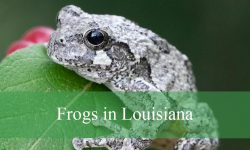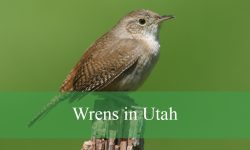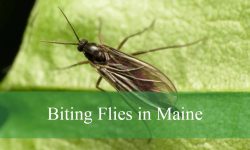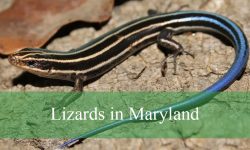Crickets are a familiar part of New York’s summer and fall soundscape, filling the evenings with their rhythmic songs. From fields and meadows to wooded edges and even basements, these insects thrive in a variety of habitats across the state. Their presence is not only charming but also ecologically important, as they recycle nutrients and serve as food for many predators.
New York is home to several types of crickets, ranging from the chirping House Cricket to the temperature-tracking Snowy Tree Cricket. Each species has its own unique characteristics, habitats, and calling patterns, making them fascinating to observe and identify. Some live in open grasslands, while others prefer shrubs, trees, or hidden damp spaces.
This guide introduces the 10 most common crickets in New York, complete with pictures and identification tips. By learning their features, songs, and preferred habitats, you’ll be able to distinguish between species and better appreciate the role these insects play in local ecosystems.
Types of Crickets Found in New York
House Cricket (Acheta domesticus)
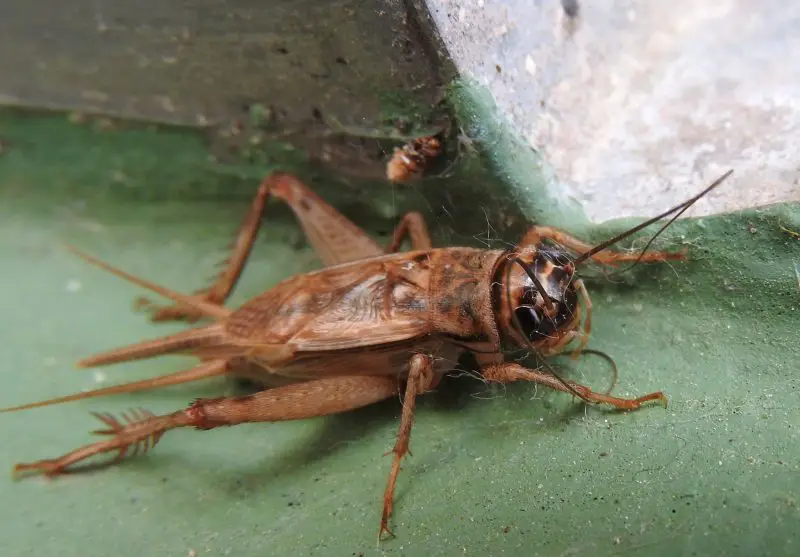
The House Cricket is one of the most common cricket species found in New York, often recognized by its light brown to tan body with darker bands across the head. Adults typically grow between 16 to 21 millimeters long and have long antennae that help them navigate their surroundings. Their wings lie flat against the back, and males are best known for producing a loud, continuous chirping sound.
This species is strongly associated with human dwellings, frequently found in warm, damp areas like basements, kitchens, and near heating appliances. Unlike some wild crickets, they thrive indoors and can survive year-round if conditions remain favorable. They are nocturnal, becoming most active after dark.
Diet-wise, House Crickets are omnivorous and opportunistic feeders, consuming plant matter, dead insects, fabric, and even paper. This behavior sometimes makes them a household nuisance, as they may damage clothing, upholstery, or stored food. Their feeding habits reflect their adaptability to human environments.
In New York, House Crickets are especially noticeable during summer and early fall when their chirping intensifies. While not harmful to people, their presence indoors can be bothersome, particularly if populations become large. Their sound, however, is also part of the cultural association with warm nights.
Fall Field Cricket (Gryllus pennsylvanicus)
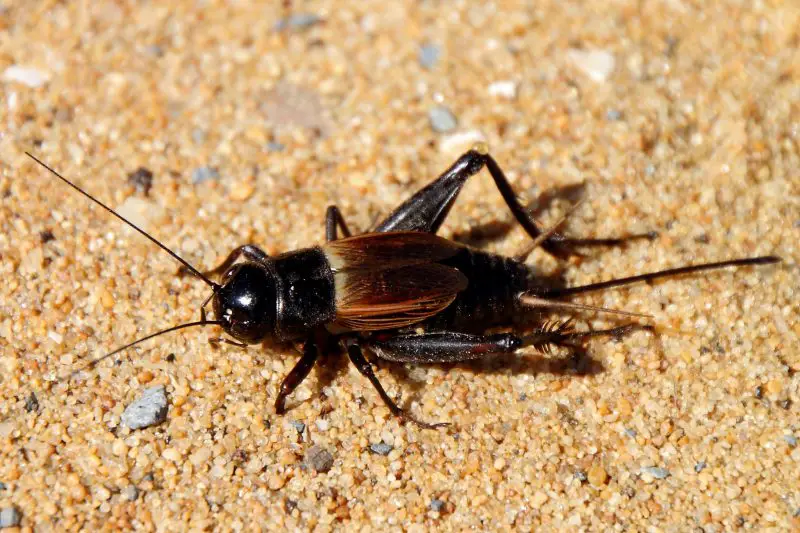
The Fall Field Cricket is a large, dark-colored species native to New York. Adults usually measure between 18 and 25 millimeters and are jet black or very dark brown, with sturdy legs adapted for jumping. Their wings are shorter compared to House Crickets, and males produce a loud, repetitive chirp most often heard in late summer and autumn.
This cricket prefers open grassy habitats, meadows, and fields but can also be found near roadsides and gardens. Unlike House Crickets, they are not typically indoor dwellers, though they may wander into buildings in search of warmth. They are highly adaptable, thriving in both rural and suburban settings across the state.
Fall Field Crickets are scavengers and herbivores, feeding on seeds, decaying plant material, and sometimes dead insects. Their presence contributes to nutrient cycling in ecosystems. They are also a food source for birds, reptiles, and small mammals, playing an important role in the food chain.
In New York, their peak activity occurs from late August through October. Their songs, often described as steady and rhythmic, are one of the most familiar sounds of fall evenings. This seasonal calling pattern is part of what gives them their common name.
Spring Field Cricket (Gryllus veletis)
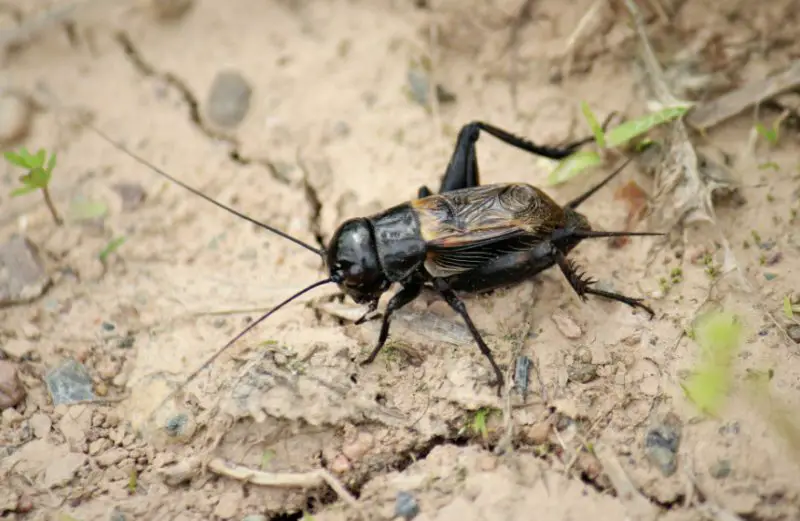
The Spring Field Cricket closely resembles the Fall Field Cricket but emerges earlier in the year, typically active from late April through June in New York. Adults are similar in size, ranging from 15 to 22 millimeters, with a glossy black body and long antennae. Their wings may be reduced, and males produce a steady chirp, though generally less intense than their fall relatives.
These crickets are commonly found in lawns, gardens, meadows, and open woodlands. They prefer sunny areas with plenty of ground cover, where they dig small burrows or hide under leaf litter. Unlike the Fall Field Cricket, they complete their life cycle earlier, ensuring that their populations peak in spring and early summer.
Their diet is similar to other field crickets, consisting mainly of plant matter, seeds, and small invertebrates. By breaking down organic material, they help maintain soil health and provide food for larger predators. This ecological role makes them beneficial, even if their numbers are sometimes high near human habitation.
In New York, their presence is a strong indicator of the changing seasons. The sound of their early songs is often one of the first insect calls of the year, signaling the arrival of warmer weather. Their life cycle ensures that by mid-summer, they are replaced by later-season species.
Northern Wood Cricket (Gryllus vernalis)
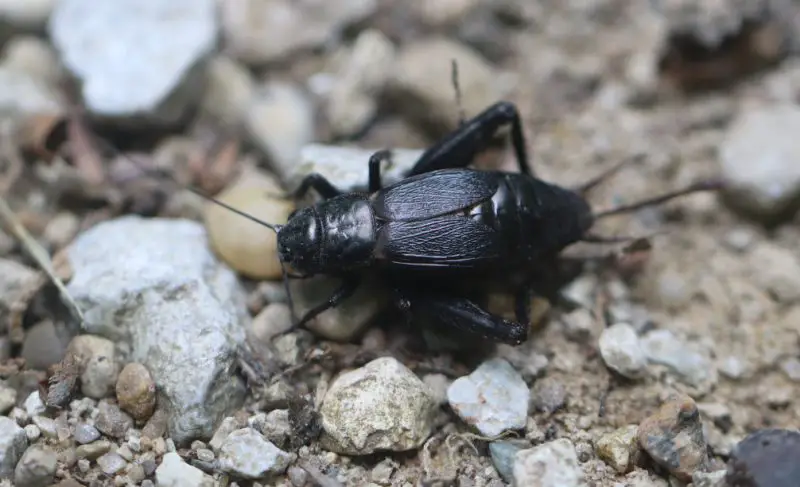
The Northern Wood Cricket is a forest-dwelling species found across New York, particularly in deciduous woodlands and shaded habitats. Adults grow to about 15–20 millimeters and are dark brown to black in color. Their bodies are more slender than field crickets, and they often remain hidden under leaf litter or within soil crevices.
They are less frequently encountered than House or Field Crickets because of their preference for wooded areas rather than open fields. Males produce a distinctive song during late spring and early summer, consisting of short, irregular chirps that differ from the steady calls of field crickets. Their song can be difficult to hear, blending with other woodland insect sounds.
Northern Wood Crickets feed primarily on decaying plant matter, fungi, and small invertebrates. Their role in the forest ecosystem is important for recycling nutrients and breaking down organic debris. They also serve as prey for woodland birds, amphibians, and small mammals.
In New York, they are most active in May and June, when males sing to attract females. Their subtle calls make them harder to detect, but their presence contributes to the overall soundscape of the forest. They are an example of how cricket diversity reflects habitat type.
Snowy Tree Cricket (Oecanthus fultoni)
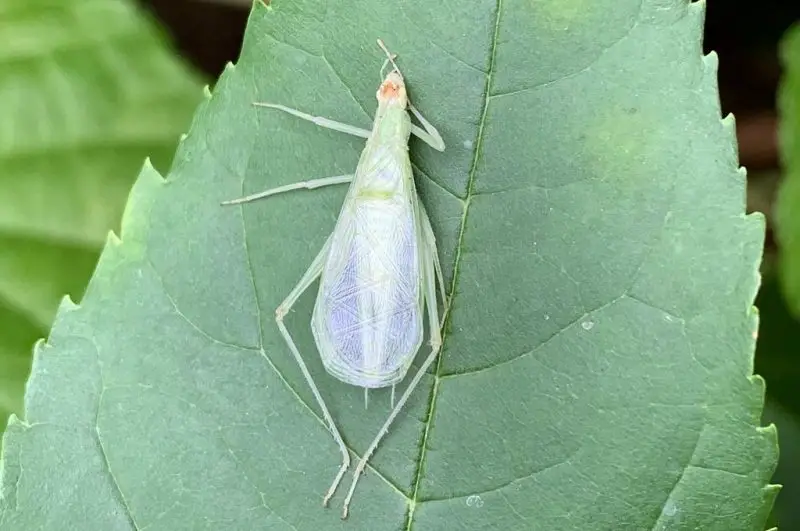
The Snowy Tree Cricket, often called the “thermometer cricket,” is a delicate, pale green species common across New York. Adults measure 13 to 16 millimeters long, with slender bodies and translucent wings. Their appearance blends perfectly with leaves, making them well-camouflaged in shrubs and trees.
This species is famous for its chirping pattern, which is temperature-dependent. The rate of chirps per minute can be used to estimate the air temperature, a phenomenon that has fascinated naturalists for generations. Their song is a soft, musical trill, often described as one of the most pleasant cricket sounds.
Snowy Tree Crickets prefer habitats such as gardens, orchards, wood edges, and shrubbery. They are most often heard rather than seen, as they remain hidden in foliage. Unlike ground-dwelling crickets, they spend much of their time elevated off the ground, resting on stems and leaves.
In New York, they are active from late summer through early fall, with males singing most frequently on warm evenings. Their gentle calls contribute to the soundscape of late summer nights, earning them the nickname “nature’s thermometer.”
Four-spotted Tree Cricket (Oecanthus quadripunctatus)
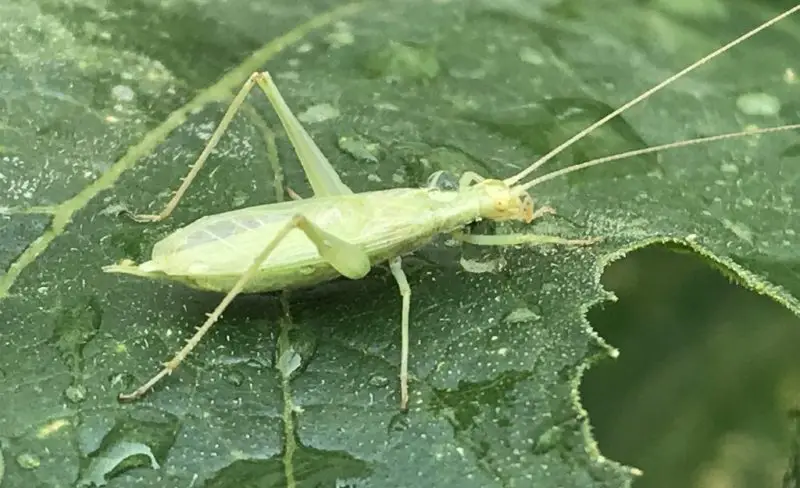
The Four-spotted Tree Cricket is a slender, pale green species found throughout New York. Adults measure around 12 to 15 millimeters and can be identified by four dark spots on the wings of males, a feature that gives the species its name. Their delicate build and long antennae allow them to blend easily into foliage, where they spend much of their lives.
This cricket is typically associated with shrubs, weeds, and young trees, especially in meadows and along woodland edges. They prefer environments with dense vegetation where they can remain hidden during the day. Unlike ground crickets, they spend most of their time climbing on leaves and stems.
Their song is a high-pitched trill, much softer than that of the Snowy Tree Cricket, and can be difficult for some people to hear. The call is most often produced during the warm evenings of late summer and early fall, adding to the chorus of nocturnal insect sounds.
In New York, the Four-spotted Tree Cricket is widespread but easily overlooked due to its quiet nature and camouflage. Despite their small size, they play an important ecological role by feeding on plant material and providing food for predators such as birds and spiders.
Black-horned Tree Cricket (Oecanthus nigricornis)
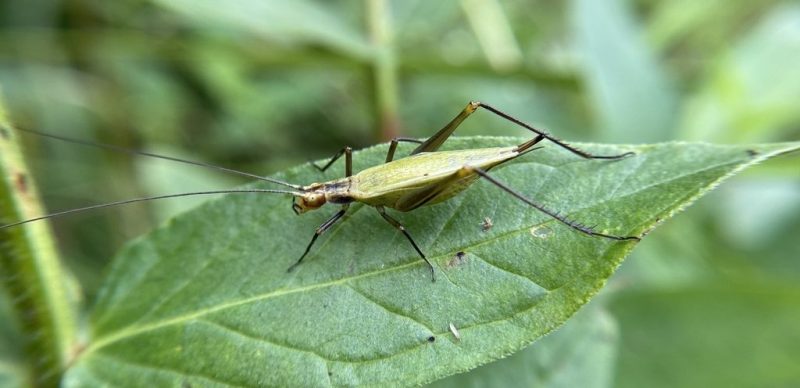
The Black-horned Tree Cricket is a light green species with slender bodies and translucent wings, measuring between 13 and 16 millimeters. They are best identified by their dark antennae, which contrast sharply with their pale green bodies. This distinguishing feature separates them from similar tree cricket species.
They are usually found in shrubby areas, gardens, and woodland edges, particularly where there is tall vegetation. Like other tree crickets, they spend much of their time perched on stems or leaves, making them more often heard than seen. Their camouflage makes them difficult to spot even when nearby.
The song of the Black-horned Tree Cricket is a soft, rhythmic trill that varies with temperature. This call is most commonly heard from July through September and is sometimes confused with the Snowy Tree Cricket’s song. Their calls contribute to the evening chorus of late summer in New York.
This species is widely distributed across the state and is considered an important part of the insect community. They feed on plant matter and occasionally small insects, while serving as prey for birds, small mammals, and predatory insects.
Striped Ground Cricket (Allonemobius fasciatus)
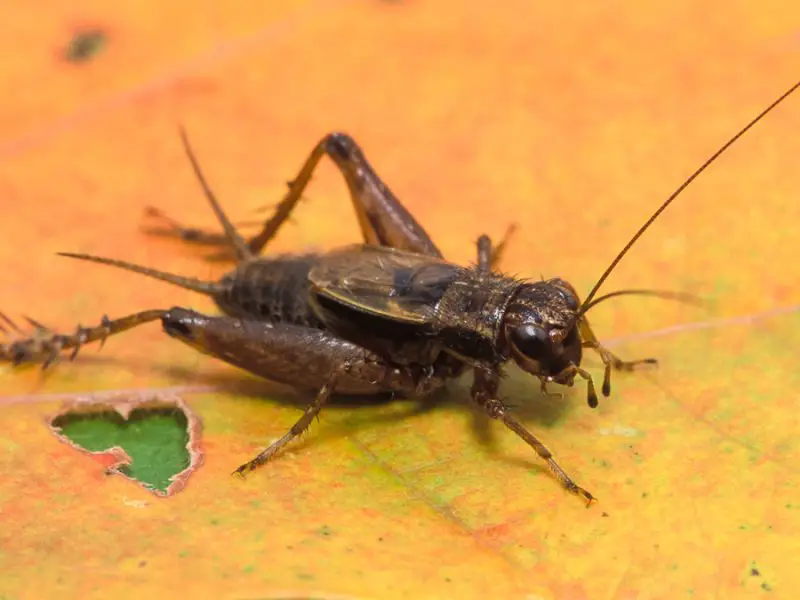
The Striped Ground Cricket is a tiny, dark-colored cricket measuring only about 6 to 9 millimeters. It is distinguished by pale stripes running lengthwise along its body, giving it a characteristic striped appearance. Despite its small size, it produces a surprisingly loud call for its stature.
This species is most commonly found in open fields, lawns, and meadows. It prefers habitats with short vegetation or bare soil where it can easily move around. They are active primarily at ground level, hiding under grass or small debris when disturbed.
Males produce a distinctive buzzing song, often heard during the day as well as at night. The call is fast and continuous, resembling the hum of an electrical current. Their songs peak in late summer and fall, making them one of the most noticeable small crickets in New York.
Striped Ground Crickets are an important food source for birds and other insectivores. Their presence also helps break down organic matter, contributing to soil health. Even though they are small, their abundance makes them ecologically significant.
Eastern Striped Cricket (Allonemobius socius)
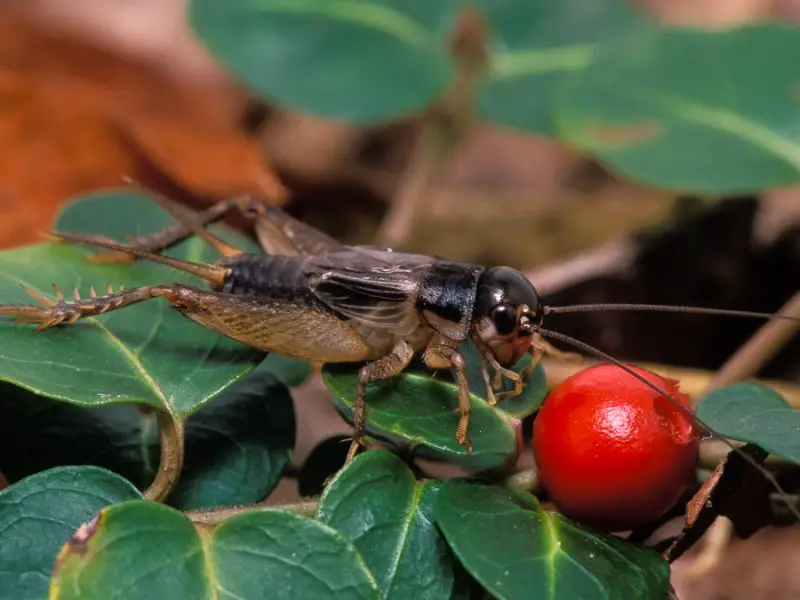
The Eastern Striped Cricket is closely related to the Striped Ground Cricket but can be slightly larger, averaging 7 to 10 millimeters in length. Like its relative, it has faint stripes running along its body, though they may appear less distinct. Its coloration ranges from dark brown to nearly black, with lighter markings on the thorax.
This cricket thrives in grassy fields, lawns, and weedy areas across New York. It is especially abundant in suburban and agricultural landscapes where open ground provides suitable habitat. Being a ground-dwelling species, it remains low among grasses and leaf litter.
The song of the Eastern Striped Cricket is a continuous trill, produced both day and night. Its call is steady and somewhat higher-pitched than that of the Striped Ground Cricket. During warm summer and fall evenings, their songs add to the background chorus of insect sounds.
They are omnivorous, feeding on decaying plant material, seeds, and small invertebrates. Like other ground crickets, they contribute to soil enrichment and act as prey for larger animals, maintaining balance within the ecosystem.
Camel Cricket (Ceuthophilus spp.)

Camel Crickets, sometimes called Cave Crickets, are distinctive for their humpbacked appearance, long legs, and lack of wings. Adults can grow up to 20 millimeters or more and are usually light brown with darker mottled markings. Unlike most crickets, they do not chirp.
They are commonly found in damp, dark habitats such as basements, crawl spaces, caves, and under logs. In New York, they are often encountered in human structures during late summer and fall when they wander indoors. Their strong legs allow them to jump suddenly when disturbed, which can startle people.
Camel Crickets feed on a wide range of organic material, including decaying plants, fungi, and even fabric or paper products when indoors. This feeding behavior makes them scavengers, helping to recycle nutrients in natural environments.
Although harmless to humans, they are sometimes considered household pests because of their unexpected presence and occasional fabric damage. In nature, however, they are beneficial decomposers, breaking down organic matter and contributing to ecosystem health.
Best Time and Place to Spot Crickets in New York
Crickets in New York are most active from late spring through early fall, with different species peaking at different times. The Spring Field Cricket is among the earliest to appear, filling the air with calls as early as April and May. By late summer, species like the Fall Field Cricket and Snowy Tree Cricket dominate the evening chorus, making August and September the prime months for observation.
The best places to find them vary depending on the species. Field Crickets are easiest to detect in grassy areas, meadows, and gardens, while Tree Crickets prefer shrubs, woodland edges, and orchards. Ground Crickets are abundant in lawns, fields, and areas with low vegetation, while Camel Crickets often turn up in basements, crawl spaces, and damp wooded habitats.
FAQs about Crickets in New York
What month do crickets start chirping in New York?
Crickets typically begin chirping in late spring, with Spring Field Crickets starting in April or May. The loudest chorus, however, occurs from July through September.
Where are crickets most commonly found in New York?
They can be found in fields, gardens, meadows, wood edges, and even basements depending on the species. Tree Crickets prefer shrubs and foliage, while Ground and Field Crickets are often at soil level.
Do crickets live indoors in New York?
Yes, some species like the House Cricket and Camel Cricket can be found indoors, especially in warm or damp environments such as basements, kitchens, and crawl spaces.
Are crickets harmful to people or property?
Most crickets are harmless, though House Crickets may nibble on fabrics, paper, or stored food. Camel Crickets may also damage fabrics when indoors but pose no direct threat to humans.
Why are Snowy Tree Crickets called “thermometer crickets”?
Because their chirping rate is linked to temperature. By counting the number of chirps in a set time, you can estimate the outside temperature, earning them the nickname “nature’s thermometer.”

